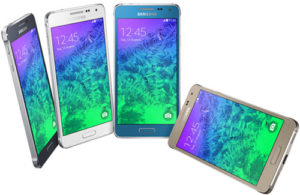
Users of Google Goggles can now put the technology to work translating text from other languages, Google announced Thursday.
Whereas a prototype demonstrated at the Mobile World Congress in Barcelona earlier this year could recognize only German text, Goggles version v1.1 can read English, French, Italian, German and Spanish as well as translate to many more languages.
Google is currently working on extending the technology’s recognition capabilities to other Latin-based languages. In the longer term, its goal is for the technology to be able to read non-Latin languages such as Chinese, Hindi and Arabic as well, software engineers Alessandro Bissacco and Avi Flamholz wrote on the Google Mobile blog.
Google Goggles v1.1 is available on devices running Android 1.6 and higher. It can now be downloaded on the Android Market.
Tapping Google Translate
Intended to facilitate searches for things that are difficult to describe in words, Google Goggles is an application that lets users of Android-based phones search the Web based on pictures taken with their phones. Users need only open the app, snap a picture and wait for their search results.
To use the translation feature, users simply point their phone at a word or phrase and then use the “region of interest” button to draw a box around specific words. Next, they press the shutter button; if Goggles recognizes the text, it will give them the option to translate. The user then presses the “translate” button to select the source and destination languages.
The technology’s translation capabilities work by connecting the phone’s camera to an optical character recognition (OCR) engine, recognizing the image as text and then translating that text into English with Google Translate, which currently supports 52 languages.
‘Swiss Army Knife Potential’
“This kind of service shows the potential of Google Goggles as a kind of Swiss army knife-like mobile utility,” Greg Sterling, founder and principal with Sterling Market Intelligence, told LinuxInsider. “The underlying translation capability is Google Translate, which works well online. One can imagine this would be extremely useful for travelers, obviously.
“I haven’t used the new Goggles translation tool, but the Goggles product in general has a way to go before it becomes a broadly useful ‘visual search’ tool,” Sterling added. “Google seems committed to improving it, however, as reflected in the recent acquisition of Plink.”
Indeed, in addition to translation, Goggles v1.1 features other enhancements as well, including “improved barcode recognition, a larger corpus of artwork, recognition of many more products and logos, an improved user interface, and the ability to initiate visual searches using images in your phone’s photo gallery,” Bissacco and Flamholz explained.
Still, “computer vision is a hard problem,” they admitted. “While we are excited about Goggles v1.1, we know that there are many images that we cannot yet recognize. The Google Goggles team is working on solving the technical challenges required to make computers see.”
‘Interesting to All, Valuable to Few’
The wireless industry is entering a new era, wireless and telecom analyst Jeff Kagan told LinuxInsider.
“It used to be about making a phone call from anywhere, but we are moving toward these devices that do so much more,” Kagan explained.
“Some of Google’s features are astounding,” he added. “They are like the feature on the new Lexus a couple years ago that lets the car park itself. It is very newsworthy. Everyone loves talking about it and seeing it, but not that many people really need it or use it.”
Google realizes that the marketplace is made up of many different users with different needs, however, “so they will create many of these features that are interesting to all, but only valuable to a few,” Kagan explained. “Users will really love to have it on their phone to show it off to their friends, and many will use it as they travel, but this will not be valuable to the majority of customers.”
Nevertheless, “this takes the smartphone to a whole new level,” Kagan concluded. “And it is only the first generation of this feature.”



















































